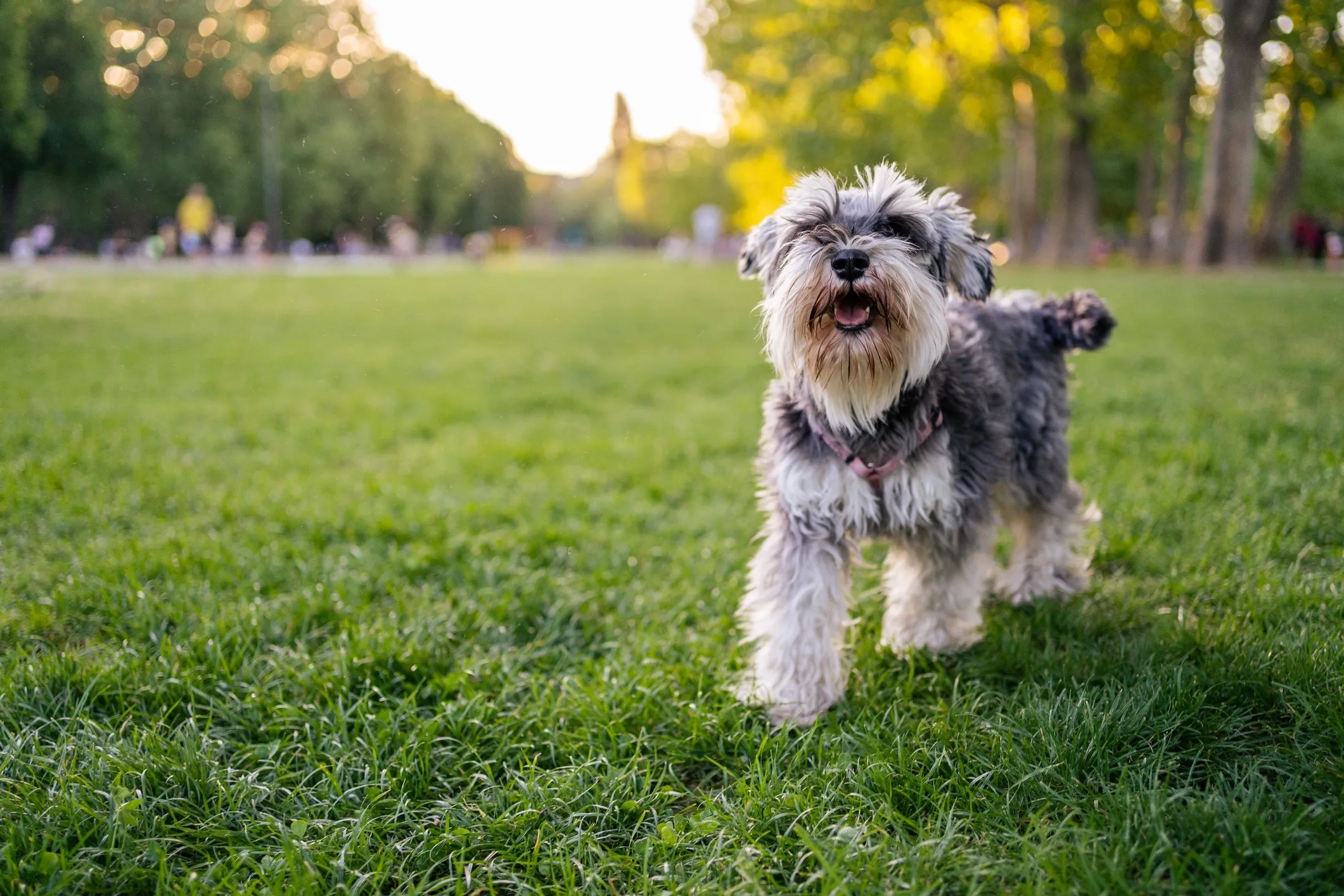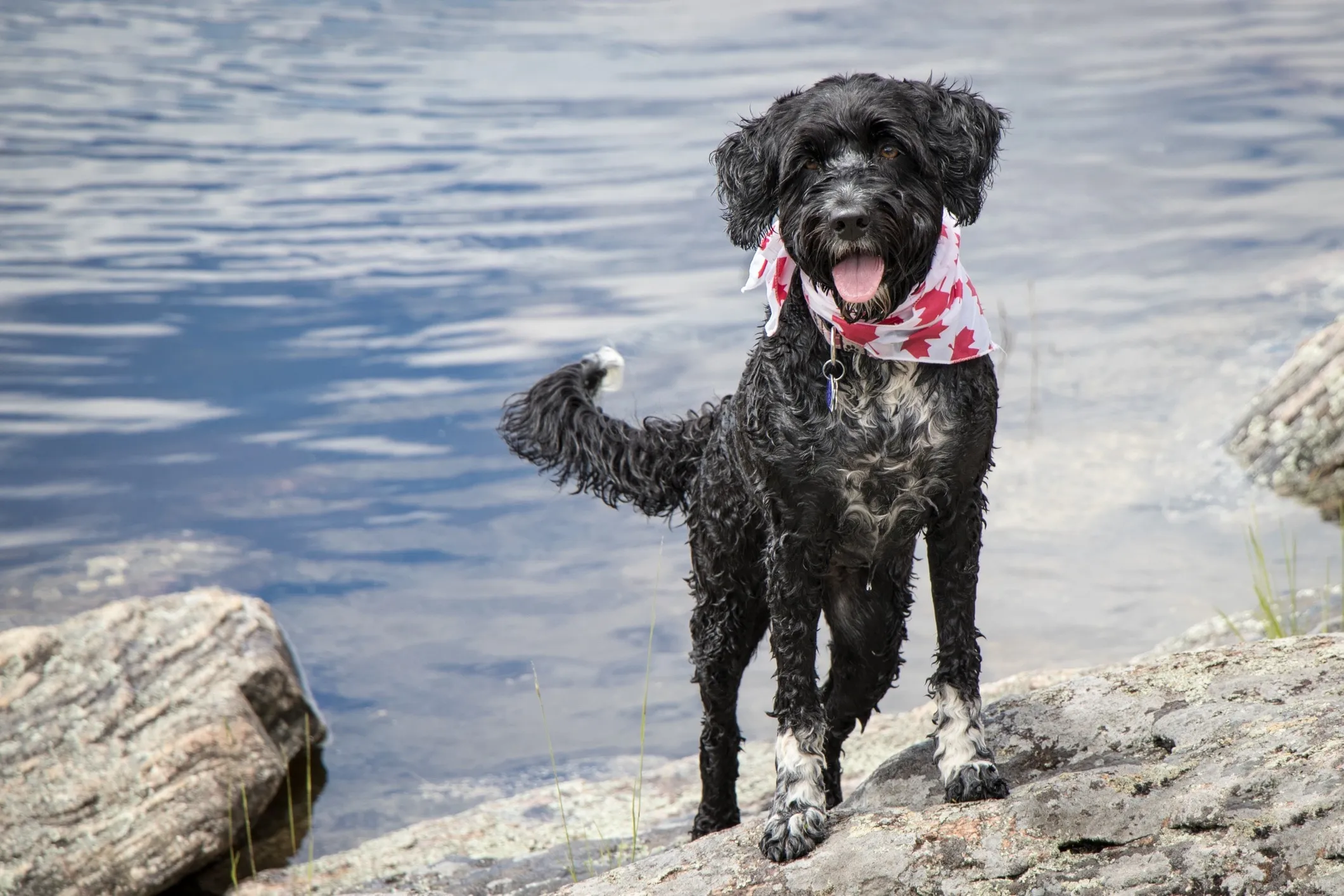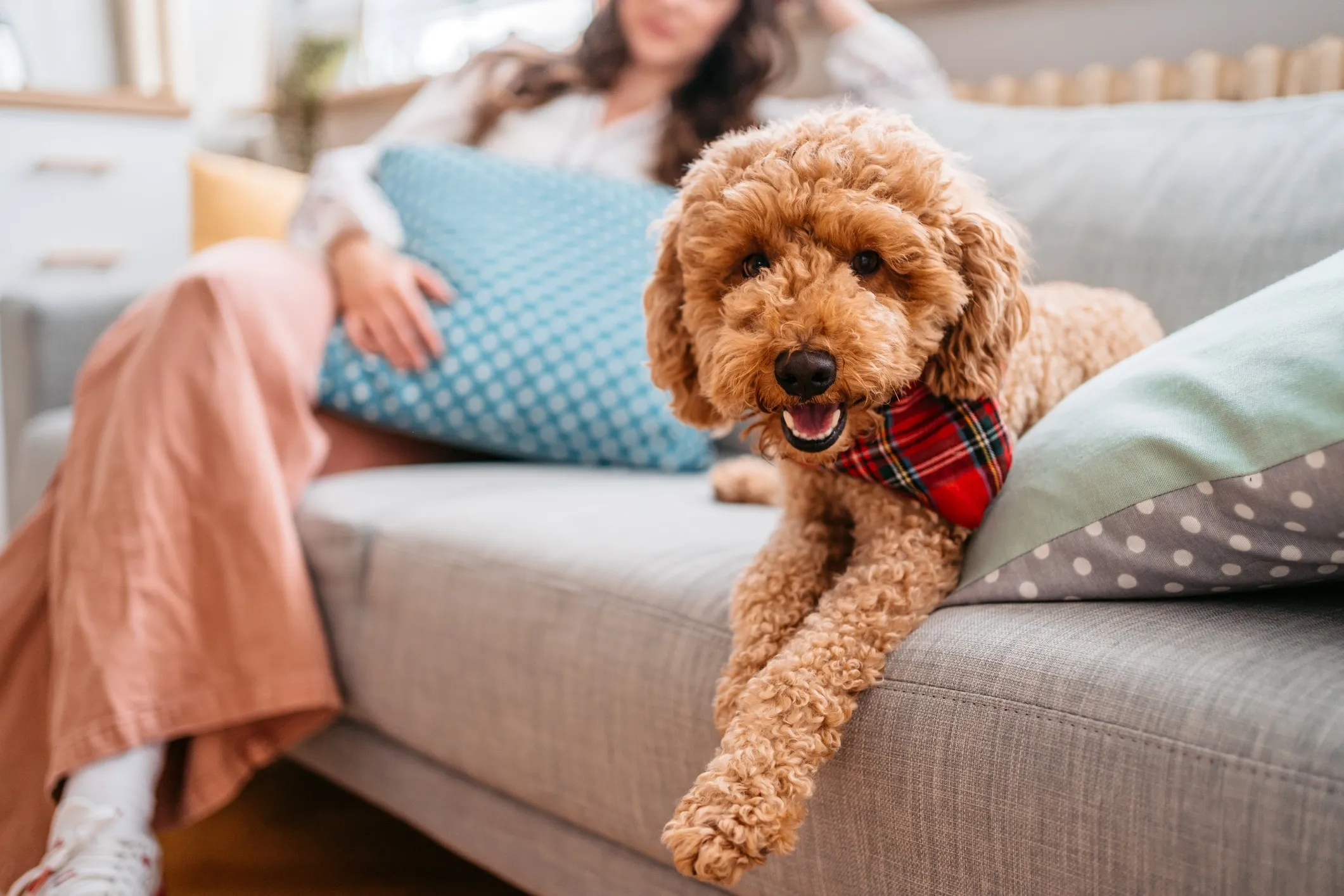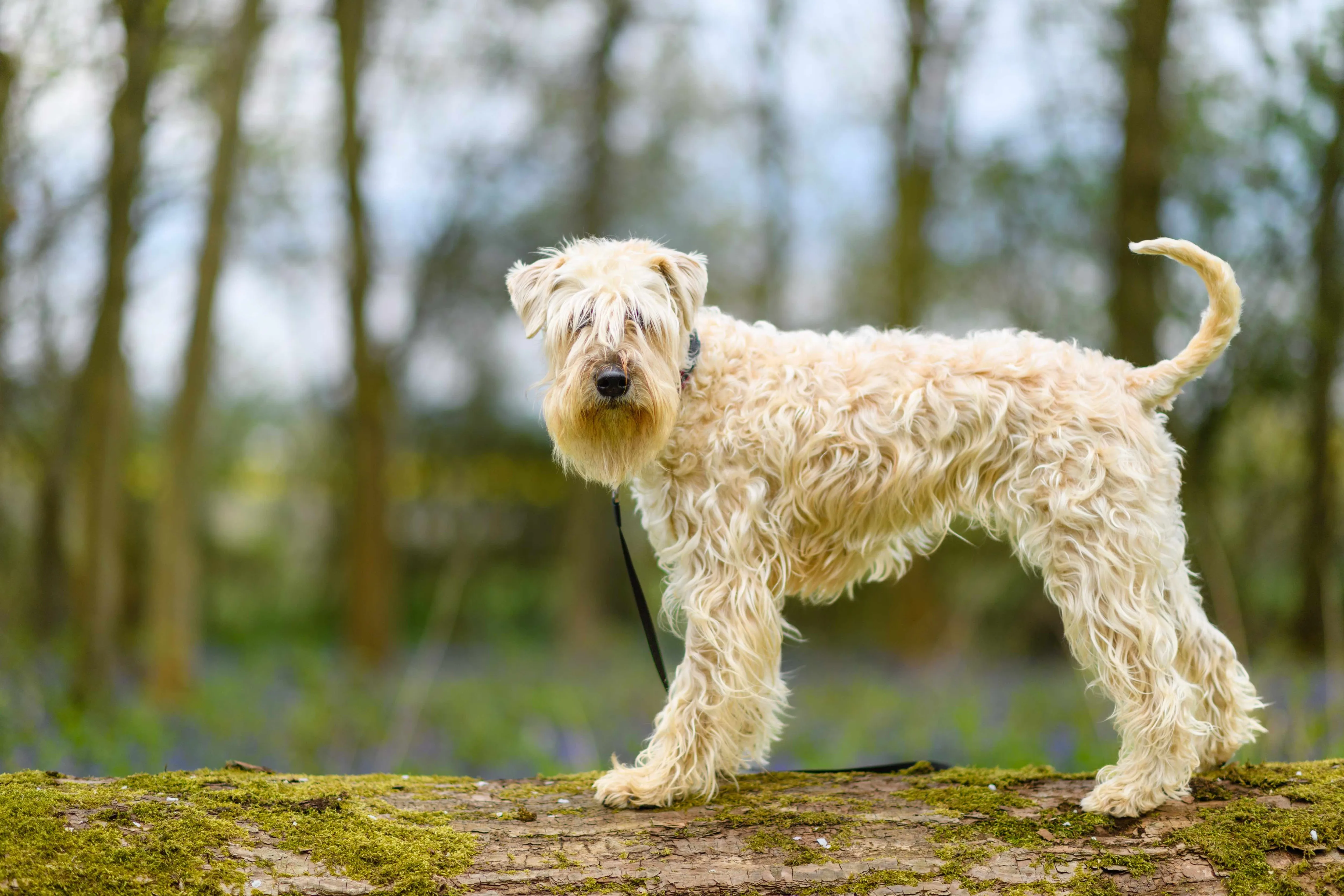Bringing a dog into your home can be a joyful experience, but for many, the concern about shedding and potential allergies can make the decision tricky. While no dog is entirely free of allergens, certain breeds are known for their minimal shedding, making them a fantastic choice for individuals seeking less cleanup and potentially fewer allergy triggers. Understanding which dog breeds naturally shed less can help you find a perfect companion that fits your lifestyle and keeps your home cleaner.
Understanding Low-Shedding Dog Breeds
The term “hypoallergenic” often comes up when discussing dogs that don’t shed much. While it’s important to remember that no dog is 100% allergen-free, these breeds are specifically recognized for producing fewer allergens primarily due to their low-shedding coats. Dog allergens are not just in hair but also in skin dander, saliva, and urine, all of which can trigger allergic responses like coughing, itching, or wheezing. However, dogs that shed less release significantly less dander into the environment, thus reducing the overall allergen load in your home. This makes them a more suitable option for many individuals with sensitivities. If you’re looking for larger companions, explore some of the best big dog breeds that don’t shed.
Top Dog Breeds with Minimal Shedding
Many wonderful breeds are celebrated for their low-shedding qualities. Here’s a comprehensive look at some of the best choices for families and individuals seeking a dog that won’t leave a carpet of fur.
1. Poodle
Poodles come in three sizes—Standard, Miniature, and Toy—and are renowned for their highly intelligent nature and non-shedding coats. Originally bred for hunting, the Standard Poodle is the largest, while the Miniature and Toy Poodles offer smaller versions of this clever breed. Regardless of size, Poodles require regular grooming to prevent their distinctive curly coats from becoming tangled and matted.
 White Poodle walking through grass
White Poodle walking through grass
2. Yorkshire Terrier
These small yet spunky dogs are a delightful option for those seeking a low-shedding companion. Yorkies boast affectionate personalities and are highly adaptable to various living situations, from spacious homes to cozy apartments, provided they receive ample attention from their human families.
3. Shih Tzu
An ancient companion breed, the Shih Tzu is another small dog with a thick, luxurious coat that sheds minimally. Known for their friendly temperament, they do require consistent grooming. Their distinctive flat faces can predispose them to certain health concerns, such as overheating and breathing issues, so proper care and monitoring are essential.
4. Miniature Schnauzer
The smallest of the three Schnauzer breeds, Miniature Schnauzers typically stand no more than 14 inches tall and weigh between 10–20 pounds. These smart dogs integrate well into diverse living environments but thrive with at least an hour of daily exercise.
 Salt and pepper Miniature Schnauzer wearing a pink harness in a park
Salt and pepper Miniature Schnauzer wearing a pink harness in a park
5. Standard Schnauzer
Sharing many popular traits with their miniature counterparts, Standard Schnauzers offer a slightly larger package, weighing up to 45 pounds. They love engaging in long walks, games of fetch, and interactive puzzle toys to keep their active minds and bodies engaged.
6. Giant Schnauzer
Among the largest low-shedding breeds, Giant Schnauzers can reach over 27 inches tall and weigh up to 85 pounds. These powerful dogs demand considerable exercise, including extensive walks, runs, hikes, and active games of fetch, to ensure they remain happy and well-behaved.
7. Bichon Frise
Playful, affectionate, and intelligent, the Bichon Frise is a small dog with a curly, low-shedding coat. Their high trainability makes them quick learners for basic commands and fun tricks, especially with positive reinforcement methods.
8. Chinese Crested
The Chinese Crested is recognized for its unique appearance, available in two varieties: hairless and powderpuff. The hairless type has smooth skin with tufts of hair on the head, tail, and paws, while the powderpuff is covered in long, silky hair. Both are considered low-shedding, playful, and loving companions.
9. Portuguese Water Dog
Originally bred to assist fishermen, these medium-sized dogs feature a thick, curly coat that sheds minimally. Portuguese Water Dogs are intelligent, highly trainable, and friendly, making them popular companions. They are high-energy pups that benefit greatly from regular exercise, especially swimming, which they adore.
 Black and white Portuguese Water Dog wearing a red maple leaf bandana in front of water
Black and white Portuguese Water Dog wearing a red maple leaf bandana in front of water
10. Labradoodle
A cross between a Labrador Retriever and a Poodle, the Labradoodle was initially developed as a hypoallergenic service dog. They are intelligent, friendly, and make wonderful family pets, known for their trainability and gentle nature, particularly when well-exercised and socialized from a young age.
11. Goldendoodle
Another beloved “doodle” breed, Goldendoodles combine the traits of a Golden Retriever and a Poodle. Like Labradoodles, they are low-shedding, friendly, and highly intelligent. While often recognized for their golden coats, they come in various colors and textures and require frequent grooming to prevent matting.
 Goldendoodle lying on a couch with a person sitting in the background
Goldendoodle lying on a couch with a person sitting in the background
12. Lagotto Romagnolo
Bred as water retrievers, Lagotto Romagnolo dogs possess a curly, woolly coat that protected them from cold waters. Though less common, they are excellent family dogs, typically good with children and other pets.
13. Affenpinscher
These small, low-shedding dogs are noted for their distinctive monkey-like appearance. Their dense, wiry coats produce fewer allergens but demand considerable care, including regular at-home brushing and a process called hand-stripping.
14. Irish Water Spaniel
Friendly, intelligent, and highly trainable, Irish Water Spaniels are another water-loving breed known for their game-retrieving skills. Their thick, curly coats, always liver-colored, need regular grooming. Their high energy levels mean they require substantial exercise to stay healthy and content.
15. Aussiedoodle
A cross between an Australian Shepherd and a Standard or Miniature Poodle, Aussiedoodles are exceptionally smart and energetic. They thrive with abundant exercise and mental stimulation, as boredom can lead to destructive behaviors. Interactive enrichment toys are highly beneficial for this breed.
16. Bolognese
Originating in Italy, Bolognese dogs are cute, low-shedding pups with long, fluffy white coats. Despite their typically messy appearance, their coats require diligent grooming. These playful and easygoing dogs are known for getting along well with children and other pets and adapt easily to various living situations.
17. Maltese
Known for their luxurious white coats, Maltese dogs are small, low-shedding companions. They make affectionate and playful pets for owners dedicated to their extensive grooming needs. A shorter “puppy cut” can simplify maintenance. For more on different types of dogs with pictures and names, explore our resources.
18. Soft Coated Wheaten Terrier
This medium-sized Irish breed is named for its incredibly soft, silky coat that sheds minimally. Wheatens maintain a high energy level throughout their lives, necessitating ample exercise and mental stimulation to ensure good behavior.
 Soft Coated Wheaten Terrier dog on a log
Soft Coated Wheaten Terrier dog on a log
19. Coton de Tulear
Originating in Madagascar, Cotons de Tulear are small, easygoing, low-shedding dogs. Their pleasant nature makes them excellent additions to families with children and other pets, especially when introductions are managed properly.
20. Schnoodle
A delightful mix of two low-shedding breeds—the Schnauzer and the Poodle—the Schnoodle boasts a coat that can be curly or wavy but is consistently low-shedding. This combination offers the best traits of both parent breeds.
21. Bedlington Terrier
Often described as “a lamb in dog’s clothing,” the Bedlington Terrier is a small, curly-haired breed recognized by its unique topknot hairdo and pom-pom ear tufts. These dogs deeply bond with their families and can develop separation anxiety if left alone for extended periods.
22. Xoloitzcuintli
Also known as Mexican Hairless Dogs, Xoloitzcuintli are among the oldest and rarest breeds. Available in toy, miniature, and standard sizes, they can be hairless or have a short coat. Both varieties are considered low-shedding.
23. Whoodle
The Whoodle is a cross between a Soft-Coated Wheaten Terrier and a Poodle, resulting in a friendly dog that sheds very little. They inherit intelligence and an affectionate nature from both parent breeds, making them charming companions.
24. Bernedoodle
A crossbreed of Bernese Mountain Dogs and Poodles, Bernedoodles are large, low-shedding dogs known for their friendly, affectionate, and gentle demeanor. They are a popular choice for families with children and other pets but require plenty of exercise to stay active and happy.
25. Shorkie
The Shorkie is a mixed breed combining the Shih Tzu and Yorkshire Terrier, two low-shedding dogs. They embody the best qualities of both: small size, playful spirit, and friendly nature. Like most breeds on this list, they thrive with a consistent grooming routine.
26. Afghan Hound
Afghan Hounds are striking dogs, known for their long, flowing coats and slender, agile builds. These fast runners are loving toward their immediate family but can be reserved with strangers, making early and consistent socialization crucial for their development.
27. Barbet
Pronounced “bar-bay,” the Barbet is a cheerful dog with a shaggy, woolly, low-shedding coat, named for the French word “barbe” (beard) reflecting their hairy chin. These large dogs love to swim, thanks to their protective curly coats, which require brushing two to three times a week to maintain good condition.
28. Shih-Poo
The Shih-Poo is a mixed breed resulting from a cross between a Shih Tzu and a Poodle (often a Toy Poodle). This small dog adapts well to nearly any living situation, provided they receive about 30 minutes of exercise and a good brushing session daily.
29. Peruvian Inca Orchid
These rare dogs are low-shedding due to their nearly hairless bodies. An ancient breed, the Peruvian Inca Orchid comes in small, medium, and large sizes and holds the distinction of being Peru’s national dog.
30. Malshi
A delightful cross between a Maltese and a Shih Tzu, the Malshi is a happy, small, low-shedding dog. They thrive on close companionship and need their favorite humans nearby to be content.
Living Happily with a Low-Shedding Dog
While these breeds shed less, integrating them into your home still requires a few considerations to maximize comfort and minimize potential allergens.
Regular Grooming is Key
Even low-shedding dogs benefit from consistent grooming and bathing to maintain a clean coat and reduce dander. Ideally, groom your dog weekly and bathe them every four to six weeks. Using specialized shampoos can further help reduce pet dander. Many low-shedding breeds also require professional trimming, hand-stripping, or other upkeep. Be prepared to either budget for regular visits to a groomer or learn to manage their coat care at home.
Maintain a Clean Home Environment
To further minimize allergens, maintaining a clean home is essential. Regular vacuuming, dusting, and washing bedding can significantly reduce pet dander. Utilizing air purifiers and ensuring good ventilation throughout your house can also help reduce airborne allergens.
Consult Your Doctor
If you or a family member suffer from allergies, managing these conditions is crucial when living with any dog, even a low-shedding one. Consulting with a healthcare provider about allergy treatments, such as medication, nasal sprays, or injections, is always advisable. Additionally, it’s wise to avoid close contact with your dog’s saliva or urine, as these can also trigger allergic reactions.
Choosing a dog breed that doesn’t shed much can be a wonderful way for individuals with allergies to enjoy the profound joy and companionship of pet parenthood without constant allergic reactions. These thoughtful choices can lead to a happier, healthier home for everyone.
